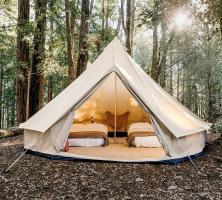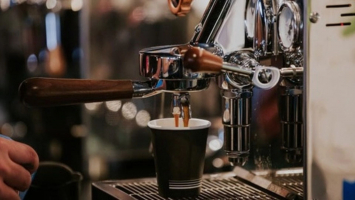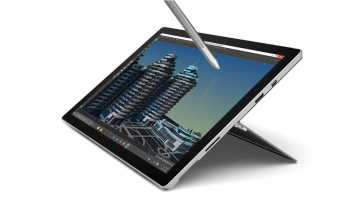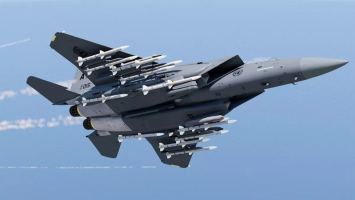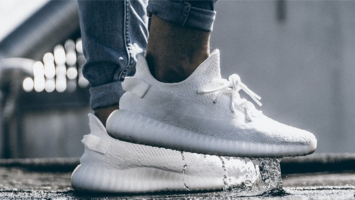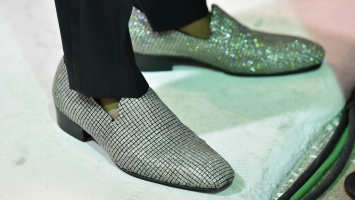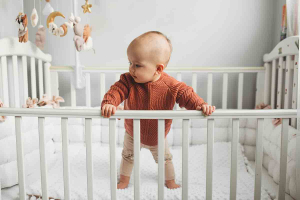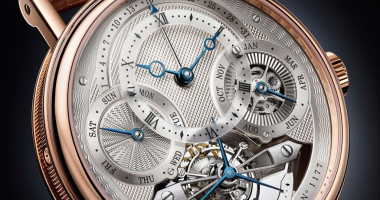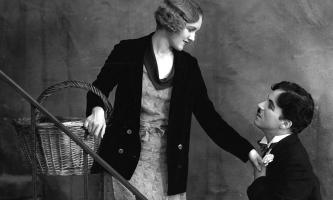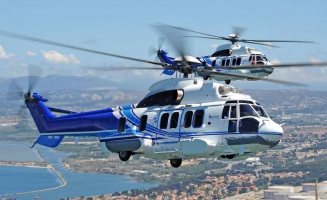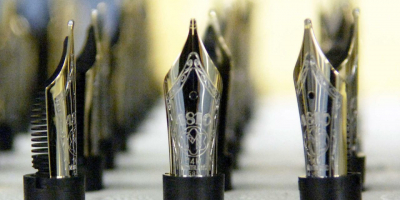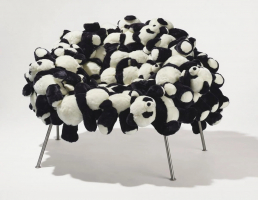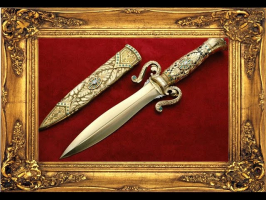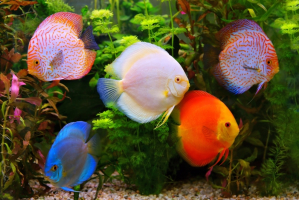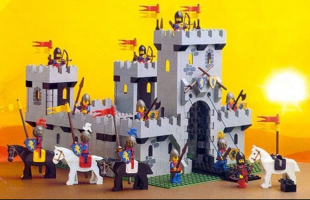Top 10 Most Expensive Space Travel Mementoes
The utmost trimming for mankind always considered the space. As a result, any mementos commemorating the daring campaign or the conquest of space are always ... read more...unique. Space mementoes are unique collectible items that attest to humanity's revolutionary significant relationship with space. In this post, let's explore the most expensive space travel mementoes with Toplist!
-
According to a spokeswoman for Sotheby's, a 1961 Soviet space capsule that transported a cosmonaut mannequin and a real dog into space was sold for $2.9 million in 2011. Russian businessman Evgeny Yurchenko purchased the Vostok 3KA-2, according to Sotheby's David Redden. He stated that the whole amount included the buyer's premium.
The capsule, composed of aluminum alloy and measuring little over 7 feet in diameter, was used as a test run for the spaceship that transported the first man into space. 20 days before Gagarin's historic first human spaceflight aboard the Vostok 1 spacecraft, the Vostok 3KA-2 space capsule was launched into space. A life-size mannequin named Ivan Ivanovich and a dog named Zvezdochka were aboard the unmanned Vostok 3KA-2 capsule ("Little Star" in Russian). The capsule completed one orbit before landing in a snow-covered ravine near the Soviet town of Izhvesk, opening the way for Gagarin's historic journey in an exact replica of the spacecraft.
Price: $2.9 million
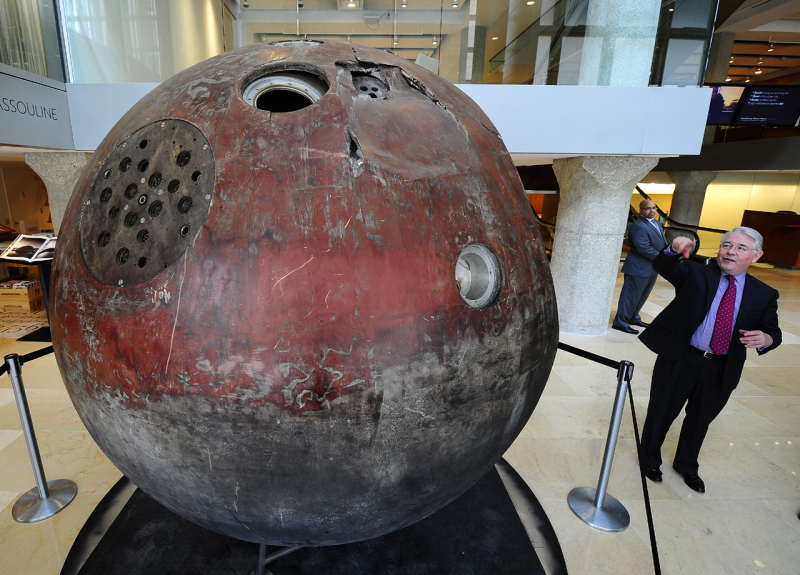
Photo: CBS News 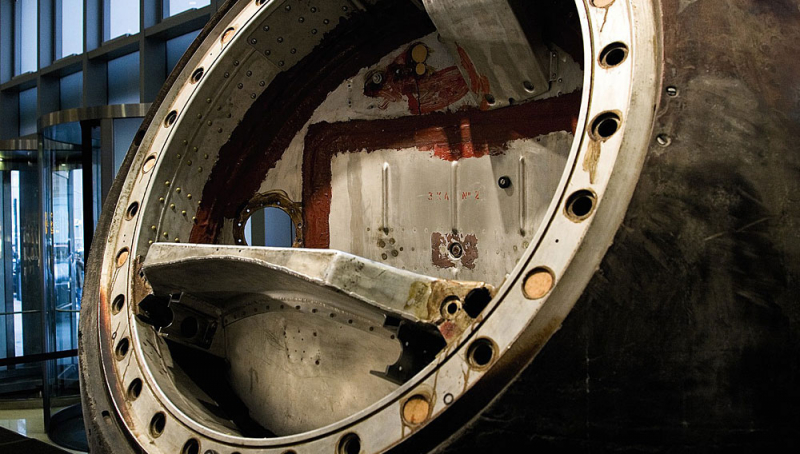
Photo: extravaganzi.com -
On July 20th, Sotheby's New York organized a unique space exploration-themed auction to commemorate the 48th anniversary of the Apollo 11 lunar landing. One of the hot-ticket items, a zipped bag coated with moon dust, went for $1.8 million. Although the former owner of the bag is presumably ecstatic, NASA is not. The agency recently lost a lengthy legal struggle to recover the item from a private collection.
Neil Armstrong used the bag, which is stamped with the words "Lunar Sample Return," during the first manned journey to the moon in 1969. According to Erin Blakemore of Smithsonian.com, the astronaut packed the bag with moon pebbles in order to convey them back to Earth.
Although the bag's $1.8 million selling price is nothing to scoff at, it was actually a bargain. It was expected to sell for between two and four million dollars, according to Sotheby's. The bag didn't even come close to matching the price of Sotheby's most expensive space travel memento, the Soviet Vostok 3KA-2 capsule, which sold for $2.9 million.
Price: $1.8 million
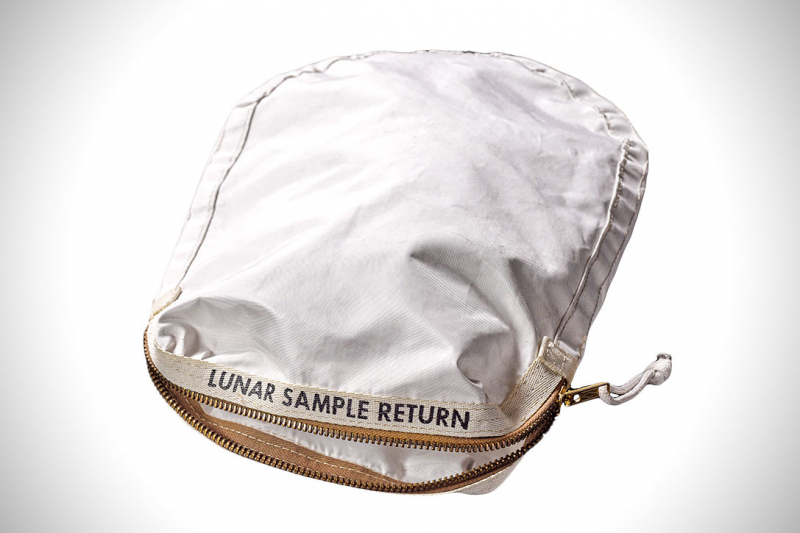
Photo: HiConsumption 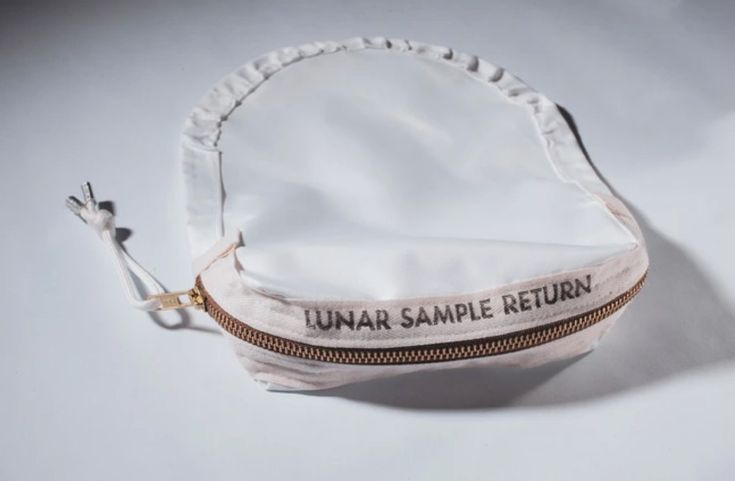
Photo: Pinterest -
The third most expensive space travel memento in this list is David Scott’s Bulova Wristwatch. The Bulova watch worn by Apollo 15 commander David Scott during NASA's fourth successful lunar landing mission in 1971 was sold for an astonishing $1.625 million by RR Auction of Boston to an unknown Florida businessman. The auction, which began on Oct. 15 with a starting price of $50,000 and culminated Thursday evening with a live auction in which the winner and his competing bidders participated by phone.
NASA gave the Apollo astronauts Omega Speedmaster timepieces to wear on their missions in the 1960s. Scott wore the Omega on his first two moonwalks, when he became the first person to operate a car on the moon, the lunar roving vehicle. The crystal that covered the Speedmaster's face popped off and was lost during his second outing. Scott had a Bulova wristwatch among his personal belongings, which he collected and put on for his third and final moonwalk.
Price: $1.625 million
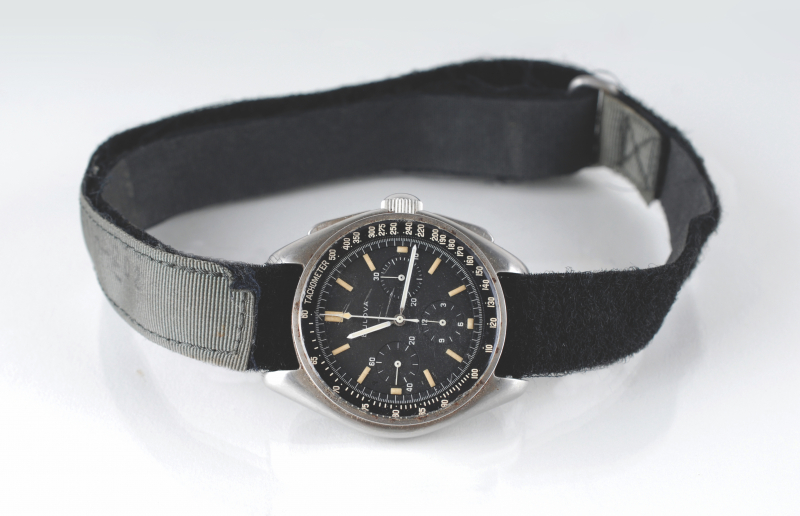
Photo: The Hot Bid 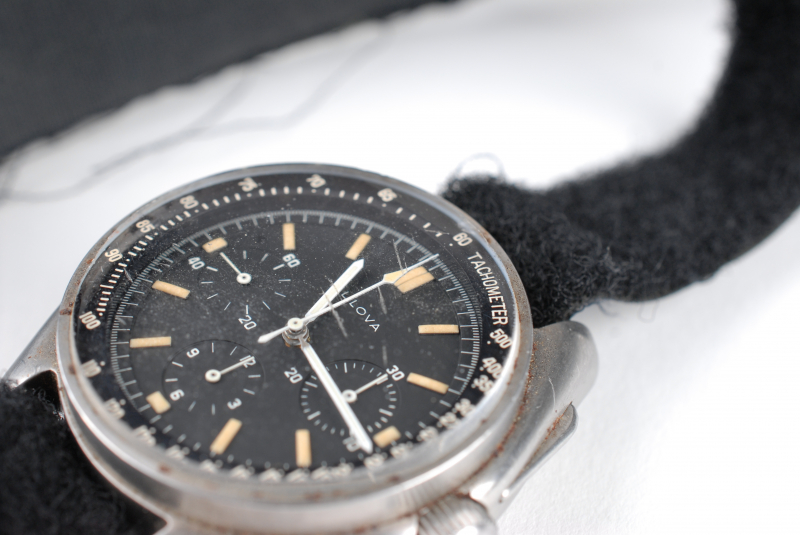
Photo: GMC ANANTNAG -
Three moon rock samples from Luna-16, the first automated sample retrieval from the moon, housed beneath glass within a 2 by 2 inch metal block positioned below an adjustable lens, the entire fixed to a 612 × 312 inch metal base labeled "H -16" [LUNA-16 SOIL PARTICLES]. Glass coatings generated by age-old meteorite impact on a central shard of basalt with visible feldspar crystals, bordering bigger fragments of finely structured vesicular agglutinates.
The pebbles were donated to Nina Ivanovna Koroleva after her husband, Sergei Pavlovich Korolev, died, in appreciation of his efforts as director of the Soviet space program. The pebbles were eventually sold for $442,500 to a Soviet space mission collector before being sold for $855,000 at Sotheby's in New York in 2018.
These samples are governed by regulations governing public gifts, and in most countries, like in the United States, such gifts cannot be transferred to a person. As a result, this is the only documented lunar sample that has been given to a private person.
Price: $855,000
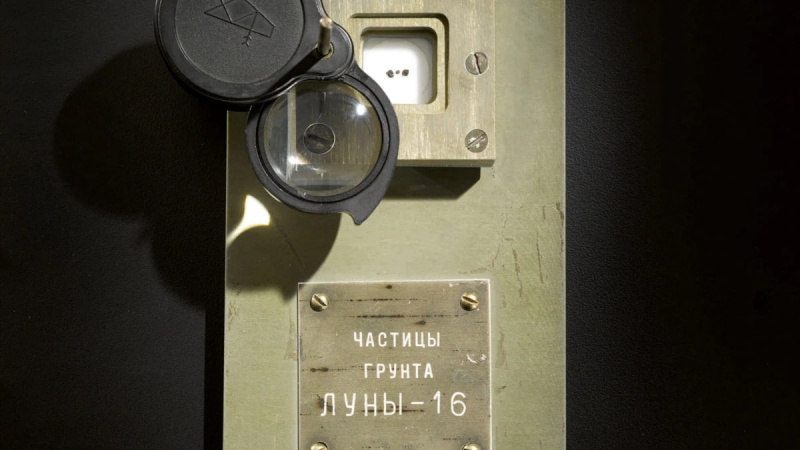
Photo: Radio Free Europe 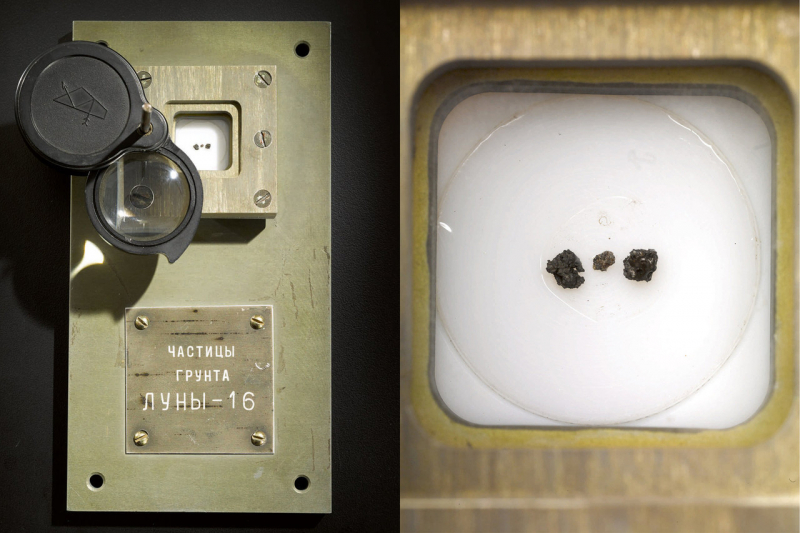
Photo: The Wall Street Journal -
On 27th September, 2017, one week before the 60th anniversary of the launch of Sputnik-1 and the beginning of the Space Age, a full-scale, vintage test model of the world's first artificial satellite sold for more than $800,000 and making it become one of the most expensive space travel mementoes.
At Bonhams' New York exhibition, the "beeping" duplicate of the now-iconic satellite, with its polished metal spherical and four protruding antennas, sold for $847,500 (plus the buyer's fee). The winning bid, given over the phone by an unidentified buyer, substantially exceeded the pre-auction estimate and the $269,000 paid for a similar Sputnik copy sold by Bonhams in 2016.
The Soviet Union launched the unmanned Sputnik-1 satellite into orbit for three months in October 1957, igniting the Cold War "Space Race." The craft then re-entered Earth's atmosphere and burned up like a scorching shot of 100-proof Smirnoff. The Soviets also created full-scale Sputnik-1 replicas for electromagnetic testing, which is good news for collectors. Two of the five known existent models are housed in museums, with the remaining three in private collections.
Price: $847,000
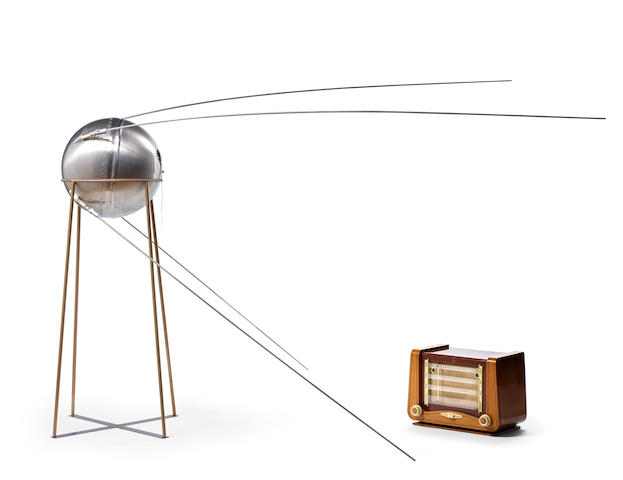
Photo: Bonhams 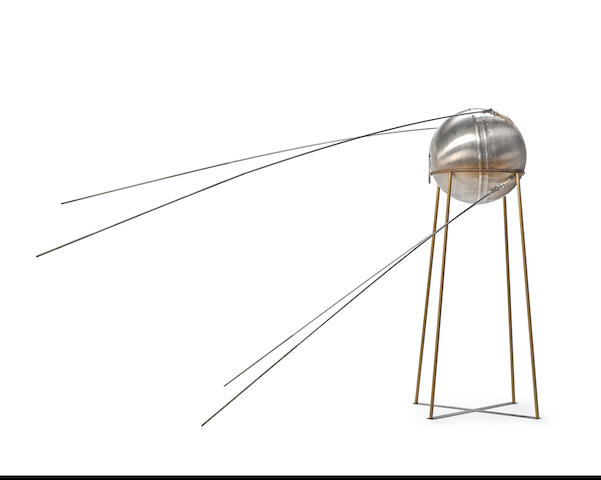
Photo: Bonhams -
Apollo 13 was a 1970 lunar mission that was never completed. The lunar mission became a rescue mission 56 hours after liftoff when an oxygen tank ruptured. An on-board oxygen tank exploded two days into the lunar mission, requiring the spaceship to return safely to Earth using improvised means. The original 352-page Flight Plan book for Apollo 13 was literally thrown out the window. After four anxious and fearful days, the crippled vessel returns to Earth. The three-person crew drank little, ate even less, and slept even less. On April 17, 1970, they returned home alive but 31 and a half pounds lighter. The story of Apollo 13 is perhaps best known thanks to Tom Hanks, Kevin Bacon, and Bill Paxton in the 1995 Academy Award-winning film.
The Apollo 13 flight plan details the journey from launch through the moment astronauts Jack Swigert, Jim Lovell, and Haise abandoned the command module in favor of the lunar lander, which they used as a lifeboat. Ken Mattingly, the original Apollo 13 command module pilot, wrote remarks in red ink on the page. After fellow astronaut Charlie Duke unintentionally exposed him to German measles days before the launch, he was pulled from the crew. Swigert took Mattingly's spot.
This historic space-flight paper sold for $275,000 at Sotheby's in 2017.
Price: $275,000
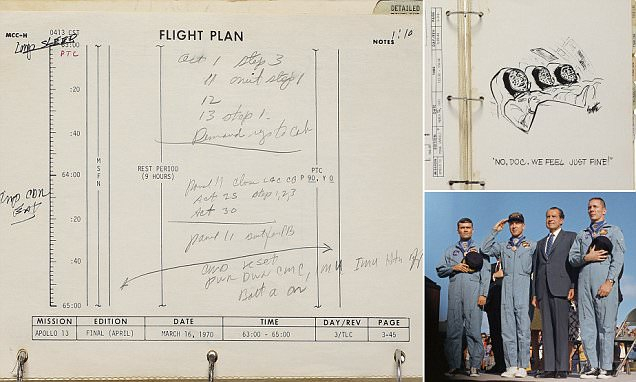
Photo; Daily Mail 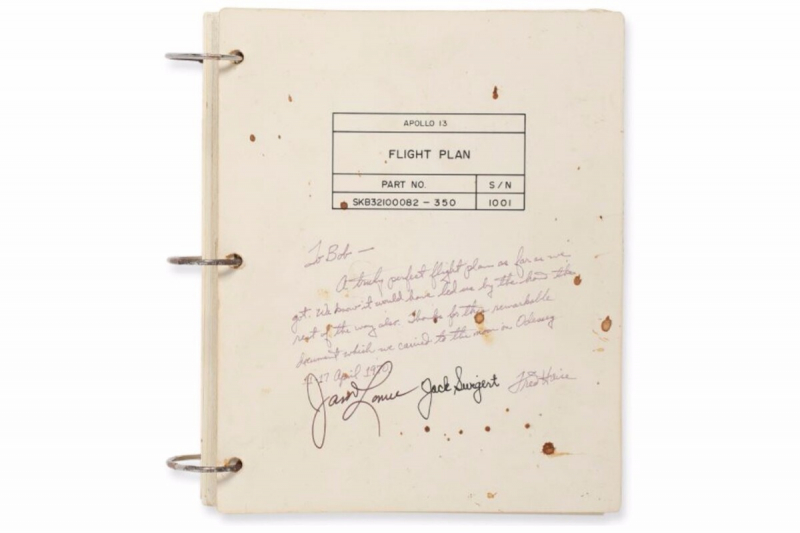
Photo: New Atlas -
Between 1963 and 1965, the David Clark Company produced a Gemini G-2C-4 full high altitude pressure suit, including an inner pressure suit and an outside cover layer, as well as a GH-2C-7 helmet, GG-2C-16 gloves made to fit Pete Conrad, and GB-5C-9 boots made to fit Frank Borman, all for NASA.
Gemini G-2C-4 full pressure suit, approximately 75 inches tall from boot to helmet; neoprene rubber inner pressure layer, white HT Nylon outer cover layer, with pressure-sealing entry zipper running from back of neck down to just above crotch, original NASA meatball patch at left chest, left shoulder with replaced American flag patch, three anodized aluminum umbilical life support outlets, label at nape. Gloves with adjustable lacing in white and aluminized (silver) HT Nylon, connecting to suit with anodized aluminum sealed rings with sealed bearing (left hand blue, right hand red), label inside each glove at wrist. White HT nylon boots with solid rubber soles, laces and zipper closure, with two red buckle-straps, label inside each boot. Helmet composed of fiberglass and epoxy with a changeable polycarbonate visor, sheepskin inside lining, and suede earpads, and a label on the inside.
Gemini G-2C-4 Full High Altitude Pressure Suit was sold for $162,500 in 2018 and ranked seventh in the list of most expensive space travel mementoes. The space suit was complete and authentic in every way, and only a few space suits like it make it out of captivity and into private hands.
Price: $162,500
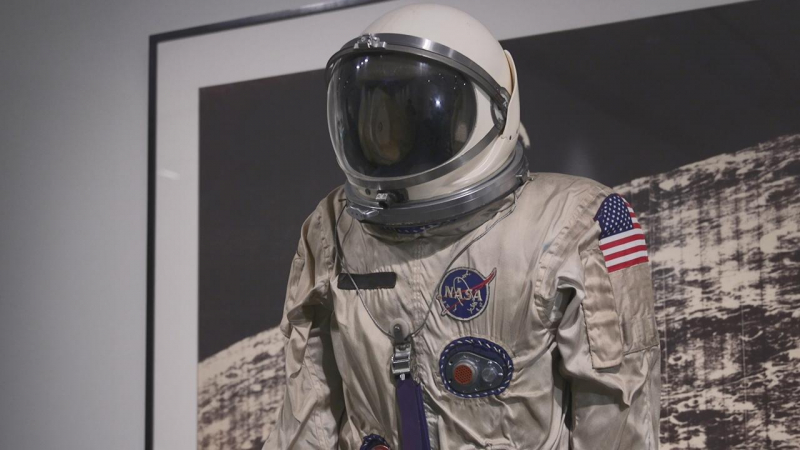
Photo: Fox News 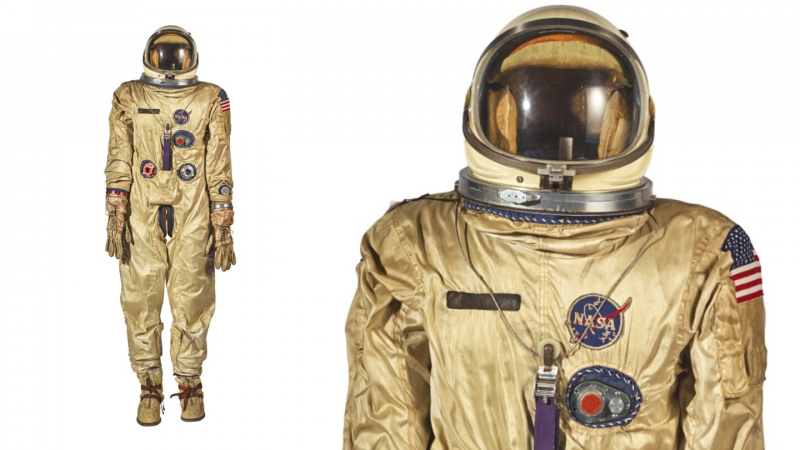
Photo: New Atlas -
Astronauts will need gloves because space is cold. This Astronaut Hand Casts is a collection of 15 life-size plaster casts with gold-hued finishes, each mounted on a hardwood pedestal with distinguishing brass name plaques, and each astronaut's name written in pencil at the base of the hand.
Neil Armstrong, Buzz Aldrin, Dave Scott, Tom Stafford, Wally Schirra, Pete Conrad, Jim Lovell, John Young, Rusty Schweickart, Walt Cunningham, Jim Mcdivitt, Gene Cernan, Don Lind, Donn Eisele, And Frank Borman are among 15 NASA astronauts whose right hands were cast The pressure bladder inside the space suit gloves was dip molded from the casts, ensuring a perfect fit. Each glove was then made directly on the plaster casts of the hands.
This collection of 15 plaster hand molds, formerly used to tailor-make spacesuit gloves for Apollo astronauts, was auctioned by Bonhams in 2016. The hands, which were mounted on wooden bases with brass name labels, grabbed $155,000.
Price: $155,000
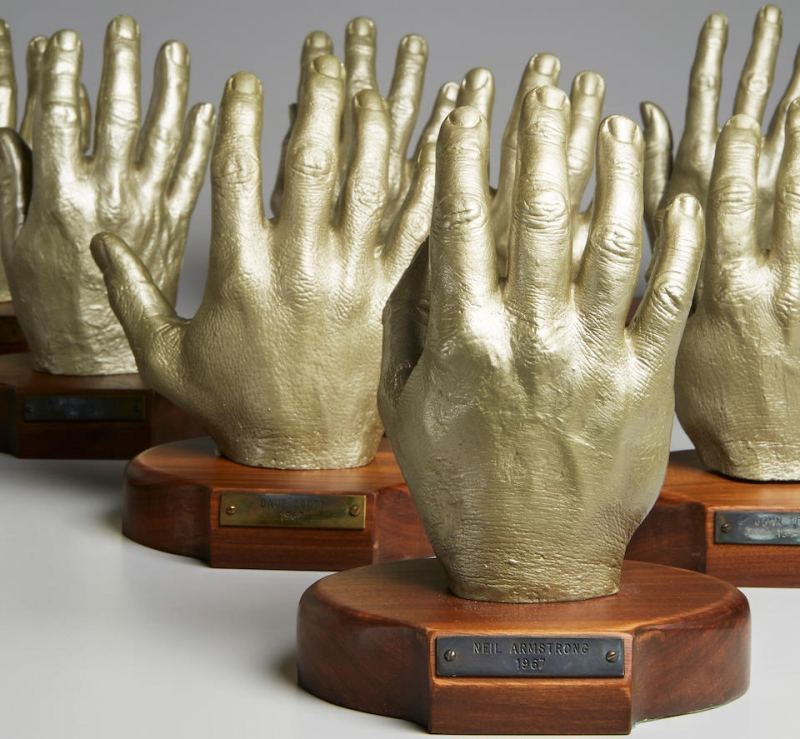
Photo: Bonhams 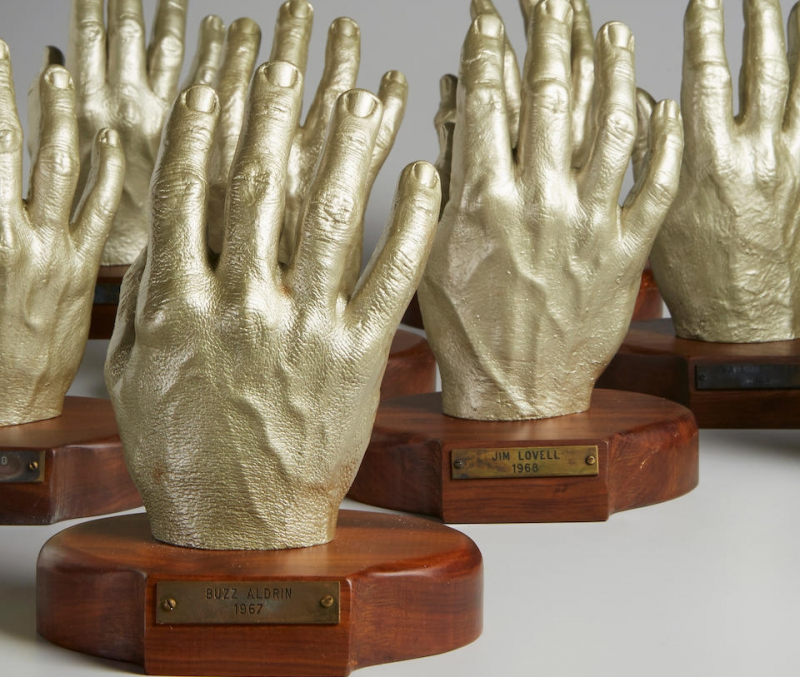
Photo: Bonhams -
Alan L. Bean, the Lunar Module Pilot on the Apollo 12 mission in 1969, wanted to be "the first human to eat spaghetti on the moon." Bean received two dried pasta meals from NASA, including "9291 Spaghetti With Meat Sauce," "Orange 9288 Grapefruit Drink," and a delicious packet of "9293 Peaches" for dessert. Bean could only eat one of the meals, while the other was returned to Earth and auctioned in 2015 by Bonhams for $50,000 to $80,000.
More than 70 items were included in the meals on Apollo 12, including rehydratable freeze-dried products, wet-pack and spoon-bowl foods, and ready-to-eat meals. Whirlpool Corporation worked with the US Army Laboratory in Natick, Massachusetts to make and package the food for the Apollo missions. The astronaut had to use a water pistol to inject water into the food bag, then knead it for roughly three minutes to work the moisture into the food in the wet-pack instances in this collection. After that, the package would be sliced open with scissors and eaten.
Price: $50,000 - $80,000
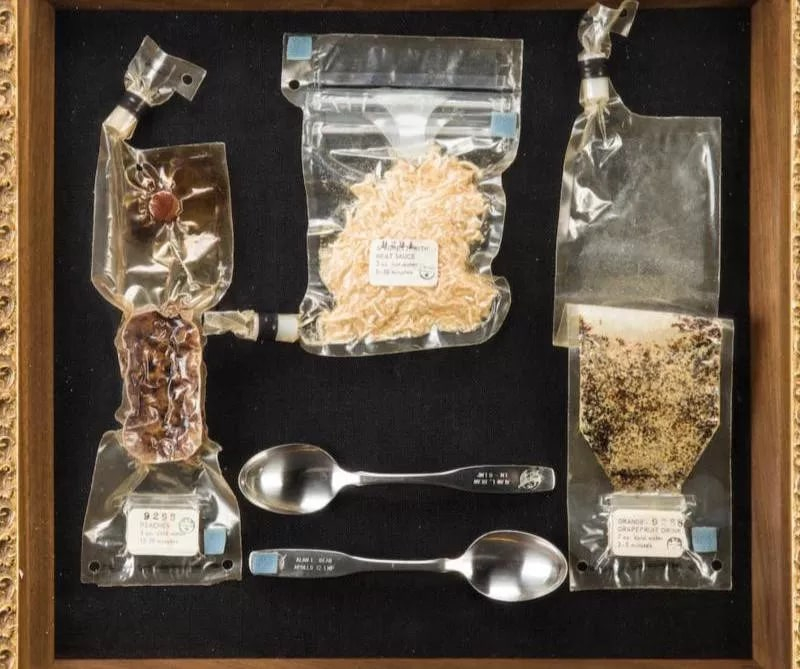
Photo: Bonhams 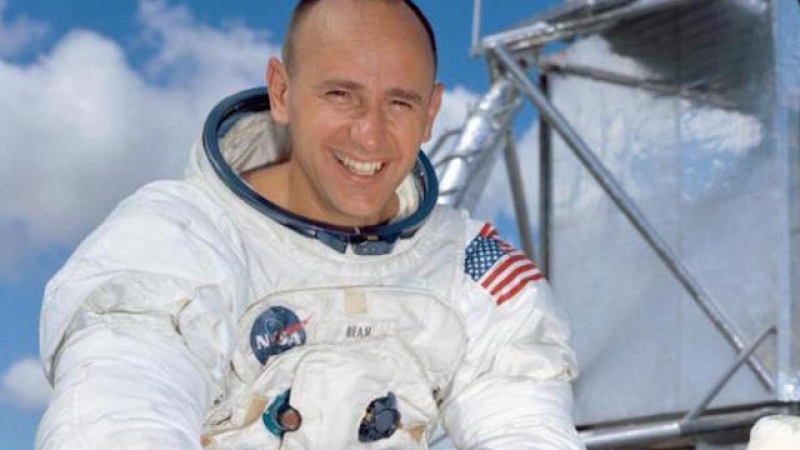
Photo: WCPO -
And the last most expensive space travel memento is an autographed transcript. This partial transcript titled “First Telephone Phone Call To The Moon” of Nixon and the Apollo 11 crew's historic phone call from the White House to the moon — the day man first footed on the lunar surface — sold for $31,325 at a Bonhams auction in 2019.
In July 1969, minutes after NASA astronauts Neil Armstrong and Edwin "Buzz" Aldrin stepped foot on the Moon, they got a crucial phone call. It was President Richard Nixon who made the announcement from the White House, and it was a historic moment for humanity.
"The most momentous phone call ever made from the White House," Nixon said of his call to Armstrong and Aldrin on July 20, 1969, the day they landed on the Moon. He thanked the astronauts on behalf of the American people and expressed world pride from his desk in the Oval Office, his phone routed to Houston and then through CapCom, at the time Bruce MCandless II, to outer space. After their return to Earth, the President would personally thank the astronauts while they were confined onboard the USS Hornet.
Price: $31,325
Source: CBS News 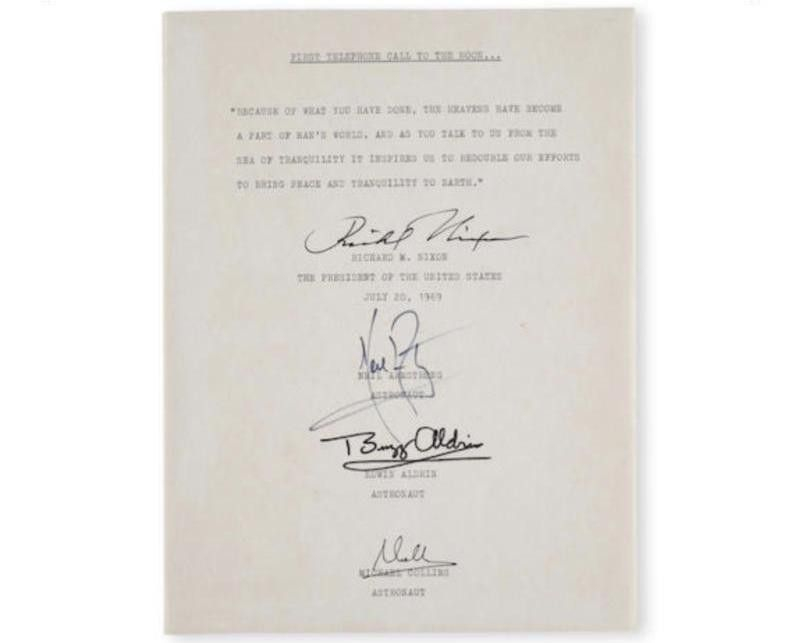
Photo: Work + Money












